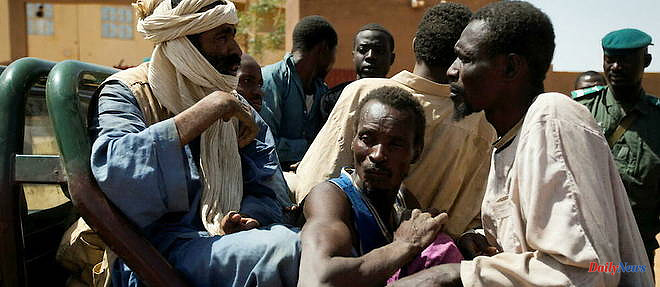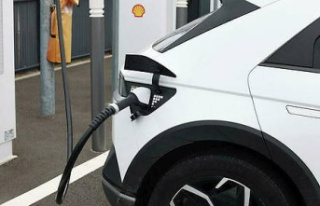The news of the crisis in the Sahel is dominated by the recurrent attacks of the Islamic State in the Sahel (ISI) in the Liptako-Gourma region, mainly in Burkina Faso and Mali. This situation is pushing the civilian populations of this region to flee the fighting. These conflicts are the continuity of the fratricidal struggle, which opposes the Katiba Macina (affiliated with the Support Group for Islam and Muslims (GSIM), the latter also being linked to Al-Qaeda); and the EIS (affiliated with the Islamic State).
Today, this struggle between the Katiba Macina and the EIS in the Inner Niger Delta seems to have taken a back seat. And yet, it is full of lessons, as to the radical, ideological character or the types of negotiations that these groups establish or not with the local populations.
In this article, we aim to explain why these two organizations engaged in a fratricidal war, particularly in the inner Niger delta, when part of the Katiba Macina fighters defected to the benefit of the EIS.
First, these organizations both originate from the Movement for Oneness and Jihad in West Africa (Mujao).
Second, they draw from the same breeding ground, i.e. they are overwhelmingly made up of nomadic Fulani, who for the most part do not belong to the Fulani elite (Jowros), which regulates the access to the bourgoutières (pastures).
Third, part of the EIS emerged from the defection of the Katiba Macina. These two organizations went for a long time without going to war. From Afghanistan to Libya to Iraq, wherever these two organizations (Al-Qaeda and the Islamic State) were present, they fought each other. However, in Mali, and more generally in the Sahel, the EIS remained for a long time without confronting the Katiba Macina. With the exception of the violent clash in April 2020, in the town of Dialloubé, in the center of the country, the two organizations seemed to have returned to a phase of peace, albeit precarious. What had been described as a "Sahelian exception".
The two groups operated together because they had a common interest in fighting the Security and Defense Forces (FDS) in Liptako-Gourma and Macina.
The Katiba Macina appears on January 25, 2015 through the attack of Nampala, in the region of Ségou, led by Hamadoun Kouffa. The latter was born in 1961 in Saraféré / Nianfunké in the Timbuktu region, in the village of Kouffa. He is the son of a lowly imam and does not claim marabout ancestry. Trained in Bankass (Mopti region, central Mali), he continued his studies in Mauritania.
The story of Kouffa is that of a gifted young student, adored for his mastery of the Koran, who will go from poetry to fiery sermons against the injustice of the Fulani world, the established Fulani political and social elite (Jowros, families marabouts, customary chiefdoms), to end up embracing the path of jihadism imported by the Dawa Tabligh - a rigorous current of Islam introduced to Mali by Pakistani preachers -, already well established in Mali from the 1990s. Its main targets are the state authorities (administrators, security forces) whom he accuses of corruption, the traditional Fulani elites who have feudal practices, whose authority he challenges, and above all, their ties to the state.
Kouffa's strategy is to draw on the contours of Salafism-jihadism which, in his eyes, represents the extension of original Islam. This Islam rejects any power deriving from blood (monarchy, chieftaincy, Fulani elite) and democratic vote (National Assembly), in favor of divine power advocating a rigorous application of Sharia, Islamic law.
Two important dates mark its phase of radicalization. First, his meeting with the Dawa Tabligh movement sect, from which he emerged with the ambition of spreading Islam in the interior delta of Niger (period during which he would have met Iyad Ag Ghali). Then, the Personal and Family Code voted on August 3, 2009, but whose promulgation was delayed under pressure from Islamic organizations, and which will not be voted until 2011, purged of all social advances.
Kouffa reportedly joined Iyad Ag Ghali in 2012 and received military training. He would have participated in the attack on Konna. Given for dead in 2018, following a strike by the French military operation Barkhane, he reappeared in 2019 on the France 24 channel.
The Mujao, which served as a base for the Katiba Macina, was also for the EIS. For his part, Abou Walid Al Sarhaoui, leader of the EIS, made his appearance in 2015. Little is known about his trajectory, unlike Kouffa, certainly due to the fact that he is a foreigner and originally from Western Sahara. He joined Mujao in 2012, and became its spokesperson. He then joined Al-mourabitoune, resulting from the merger between Mujao and the Mulathamenn brigade, led at the time by the Algerian Mokhtar Belmohktar. He was killed by Barkhane on August 17, 2021, in Mali.
Initially, if ISIS is not recognized by the Islamic State, it will eventually be recognized by Abubakr al-Bagdhadi following major jihadist operations carried out there. And if at the start, the combatants were Malians and Nigeriens, today the group has become internationalized in the so-called three-border zone – between Mali, Niger and Burkina Faso – as the base of the ISIS.
In 2012, an alliance between separatist and jihadist groups led to the Aguelhoc massacre, in which soldiers of the Malian army were victims. With the occupation of the northern regions of Mali by the jihadist forces, the MUJAO will end up gaining the upper hand with the eviction of the National Movement for the Liberation of Azawad (MNLA) in Gao. The French military operation Serval begins in 2013, the MUJAO will be finally dismantled. An essential component of this group will then massively join the Katiba Macina. However, some of the MUJAO fighters - which also included Arabs, Tuaregs, Sonrhaïs - were Fulani herders. The latter will thus strengthen the ranks of the Katibat Macina from 2015. They are then mainly young Fulani from the Mali-Niger border, from the Dogon country, from Hayré, from Mondoro to the central Gourma in the region of Mopti.
Some of these Fulani – in conflict with the Tuaregs in the Ménaka area (north-eastern Mali) – will end up joining the EIS. Among the causes of this attraction, the radical nature of HIS seems to be an important point. The Katiba Macina is in a process of imposing Sharia, which is directed towards all communities, based on the belief that religion transcends community identities, taken up today by the EIS. The latter is in a more radical form of struggle. It is a violent organization, due to the abuses it commits against civilian populations. The financial power of IS – at the height of its existence in the Middle East – may also have played a role in attracting young fighters.
EIS criticizes Katiba for holding municipal elections, notably in Nampala in the Ségou region in 2016. Indeed, Kouffa believes that mayors are agents of development. Therefore, the Katiba does not have to fight them. The EIS also criticizes the Katiba for the non-application of sharia, that is to say that it does not practice stoning or amputation of limbs. The EIS also criticizes the Katiba for having accepted the reopening of schools (provided that the teachers are from the delta, a condition laid down by Kouffa). Katiba's signing of a compromise with the Dozo hunters who are considered disbelievers was also criticized by the EIS. The Katiba refuses to share the spoils of war and zakat. Which is not to the taste of the EIS.
But the main reason for the clash between the two jihadist organizations remains the question of access to the bourgoutières. These are pastures that develop in the temporary flood zones of the delta. They are made up of "bourgous" - aquatic plants highly prized by herders - and their herds during periods of recession. The Jowros have been the managers of these bourgoutières since the Dîna, the Fulani theocratic empire.
If Kouffa built his reputation on the issues of equality between all, and non-payment of bourgout dues – in the sense that the bourgous are the property of God and belong to no one –, he returned to this question in allying with the Jowros in the face of the defection of its fighters to the benefit of the ISIS. Additional proof, if needed, that he is less a convinced ideologue than a political-identity entrepreneur. These disagreements involving clashes for control of the delta (Katiba Macina stronghold) contribute to increasing instability in these regions.
For a long time, negotiations took place between the two organizations to avoid clashes, but they ultimately failed. The EIS then attempted a breakthrough in the Delta. This organization advocates a strict application of Sharia, while Katiba Macina opts for its contextualized and pragmatic application. The Katiba Macina seems better organized, more structured institutionally. In regular contact with the populations, it sets up bodies to manage day-to-day affairs.
The EIS, which until now favored the extension of its field of action rather than a lasting anchorage in its areas of influence, seems to align itself with a "jihadist governance" observable in the areas under the control of the GSIM . This is the new situation that is emerging, especially in the Ménaka region. Fratricidal fighting is raging today in this region, and more generally in Liptako-Gourma.
* Lamine Savané is a doctor in political science, lecturer, ATER, CEPEL (UMR 5112) CNRS, Montpellier, PAPA post-doctoral fellow, University of Ségou.
*Fassory Sangare is a teacher-researcher in management, University of Legal and Political Sciences of Bamako and
* Mahamadou Bassirou Tangara is a teacher-researcher in development economics, University of Social Sciences and Management of Bamako.












